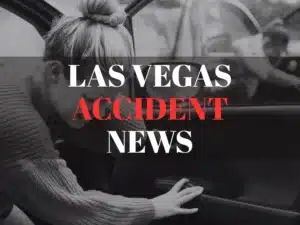Las Vegas, NV (April 24th, 2025) – The UNLV Police Department is currently facing an officer shortage, an issue that predates the fatal campus shooting on December 6, 2023.
Educational institutions in Las Vegas are expected to provide a secure environment where students can learn and staff can work without fear. However, when violent incidents occur on school grounds—such as the tragic shooting at the University of Nevada, Las Vegas—and proper preventative measures are not in place, serious questions arise about school liability for violence. In such cases, the failure to ensure safety can have tragic consequences for victims, families, and the broader campus community.
Campus Violence: The Greatest Threat to School Safety
Campus violence is no longer rare. Fights, assaults, and weapons brought onto school grounds are happening with alarming frequency, especially in large school districts like Clark County.
What makes these incidents especially troubling is that they’re often preventable. When warning signs are ignored or safety procedures are lacking, schools may be directly responsible for the harm that follows.
How Schools Can Help Prevent Violence
A safe campus isn’t just about security cameras or lockdown drills. Rather, it’s about creating systems that reduce risk and respond quickly. Such actions may include:
- Investigating threats and responding to student reports
- Maintaining secure access to campus
- Supervising students, staff, and visitors during school hours and events
- Training staff how to handle emergencies
When schools cut corners, especially by failing to staff up or monitor high-risk areas, they increase the chance that someone gets hurt.
On December 6, 2023, an armed man killed three professors, and wounded a fourth, in Beam Hall before he was shot and killed by UNLV officers. While the shooter was stopped within minutes, the department has still made enhancements to its safety protocols, including hiring a 24/7 private security company.
Inadequate Safety Measures: What Counts as Negligence?
Security on school campuses, from elementary to college, doesn’t need to be perfect. However, it should be reasonable. If a school doesn’t have enough trained personnel, working surveillance, or functioning protocols, it may be liable for any resulting student or staff injuries.
In a recent interview, the chief of the UNLV Police Department reported having a 25% staffing vacancy on the day of the December 6th shooting.
Other Common Grounds for School Liability
While violence is often the most serious threat, injuries happen in many ways when schools fall short. Some of the most common injury risks in educational institutions include:
Facility Hazards and Unsafe Conditions
Schools must maintain buildings, walkways, and common areas. If a student is injured in a slip and fall accident, or by a broken stairwell, slick floor, or faulty equipment, the school may be liable.
Supervision Failures
Whether during recess, lunch, or extracurriculars, students need to be supervised. If fights or injuries happen under a staff member’s watch, or because no one was watching, it may amount to negligence.
Delayed Emergency Response
If a student is hurt or falls ill and the school delays medical attention, that inaction can lead to serious complications. Nevada law expects schools to respond quickly and appropriately.
What to Do After a School Injury
When violence happens at schools, emotions often run high, and so do the stakes. Due to issues, like special laws for filing an injury lawsuit against the government, the steps you take in the aftermath can help protect your rights, strengthen any future legal claim, and support your physical and emotional recovery.
Get Immediate Medical Attention
No matter how minor the injury might seem, see a medical professional as soon as possible. Physical wounds from fights, assaults, or other violent encounters may not show full symptoms right away. Psychological trauma, like anxiety or PTSD, can also emerge later and should be documented.
Prompt medical care also creates a clear record linking the injury to the incident, which is key if a claim is filed later.
Request an Official Report
Ask the school to create and share an incident report. Schools are required to document serious incidents, but that doesn’t mean the report will reflect what really happened unless you insist on it. Make sure your version of events is included in writing.
If police responded to the scene, request a copy of their report as well. It can serve as an official timeline and may contain critical witness statements or surveillance details.
Preserve Any Evidence
Evidence can disappear quickly after a school-related assault or violent incident. If possible, gather the following:
- Photos of injuries and the scene
- Names and contact info of witnesses (including students)
- Screenshots of text messages, social media posts, or emails related to the incident
- Clothing or personal items that were damaged
Time may erase evidence, and schools might not voluntarily turn over records unless pressured to do so. As such, it may be essential to have such evidence to help support your premises liability claim.
Get Legal Guidance Early
School districts and private institutions often have legal teams protecting their interests. You should, too. Speak with a personal injury attorney familiar with school violence cases in Nevada. They can help preserve evidence, file claims within tight deadlines, and deal with the bureaucracy that often delays justice.
If a school’s failure to maintain and enforce adequate security protocols contributed to your injury, our personal injury attorney at George Bochanis Injury Law Offices can help. We will review the circumstances of your case, and help you pursue compensation for losses, including past and future medical costs, pain and suffering, and lost wages or earning potential. Call 702-388-2005 for a free initial consultation.




